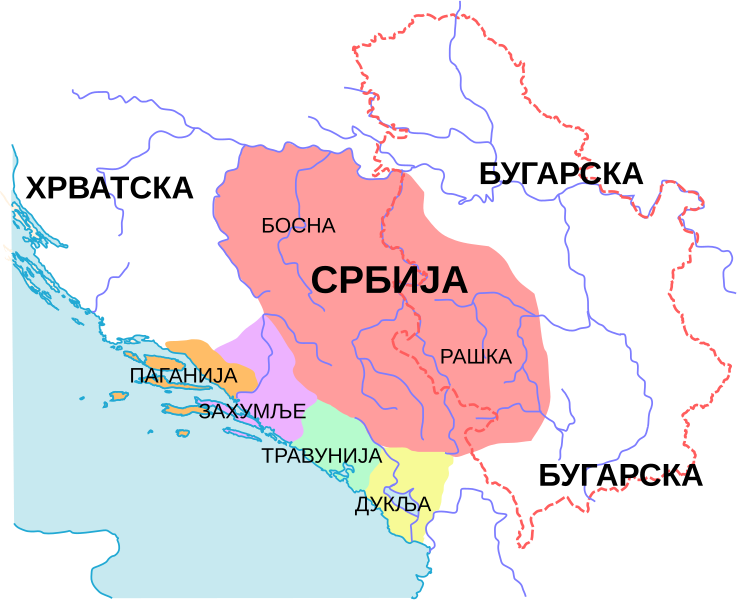Naravno da ti treba - budimo realni.
 http://forum.krstarica.com/showthread.php/514492-Vlasi-(Romani)-Starosedeoci-Balkanskog-poluostrva?p=24204987&viewfull=1#post24204987
http://forum.krstarica.com/showthread.php/514492-Vlasi-(Romani)-Starosedeoci-Balkanskog-poluostrva?p=24204987&viewfull=1#post24204987
Slično je i slučaju kod Norvežana, koji su standardni jezik usvojili od Danaca ali ga, za razliku od kleroimperijalističke velikohrvatske ideologije, ne krste pogrešnim imenom:
Bokmål ([ˈbuːkmɔːl], lit. "book language") is one of two official Norwegian written standard languages,
the other being Nynorsk. Bokmål is used by 85–90%[SUP][1][/SUP] of the population in Norway, and is the standard most commonly taught to foreign students of the Norwegian language.
Bokmål is regulated by the governmental Norwegian Language Council. A more conservative orthographic standard, commonly known as
Riksmål, is regulated by the non-governmental Norwegian Academy for Language and Literature.
The first Bokmål orthography was officially adopted in 1907 under the name
Riksmål after
being under development since 1879.[SUP][2][/SUP] The architects behind the reform were Marius Nygaard and Jonathan Aars (no).[SUP][3][/SUP] It was an adaptation of written Danish, which was commonly used since the past union with Denmark, to the Dano-Norwegian koiné spoken by the Norwegian urban elite, especially in the capital. When the large conservative newspaper
Aftenposten adopted the 1907 orthography in 1923, Danish writing was practically out of use in Norway.
The name Bokmål was officially adopted in 1929 after a proposition to call the written language Dano-Norwegian lost by a single vote in the Lagting (a chamber in the Norwegian parliament).[SUP][2][/SUP]
http://en.wikipedia.org/wiki/Bokmål
http://en.wikipedia.org/wiki/Urdu
Urdu /ˈʊərduː/ (
اُردُو [ˈʊrd̪u] (
listen)), or more precisely
Standard Urdu, is a standardized register of the
Hindustani language (Hindi-Urdu). It is the national language and lingua franca of Pakistan. It is also widely spoken in India, where it is one of the 22 scheduled languages and an official language of five Indian states.
Based on the Khariboli dialect of Delhi, Urdu developed under the influence of Persian, Arabic, and Turkic languages over the course of almost 900 years.[SUP][5][/SUP] It began to take shape in the region of Uttar Pradesh in the Indian subcontinent during the Delhi Sultanate (1206–1527), and continued to develop under the Mughal Empire (1526–1858). Urdu is mutually intelligible with Standard Hindi spoken in India. Both languages share the same Indo-Aryan base, and are so similar in basic structure, grammar and to a large extent vocabulary and phonology, that they appear to be one language.[SUP][6][/SUP] The combined population of Urdu and Standard Hindi speakers is the fourth largest in the world.[SUP][7][/SUP]
The word
Urdu is derived from the same Turkish word that has given English
horde.[SUP][19][/SUP]










